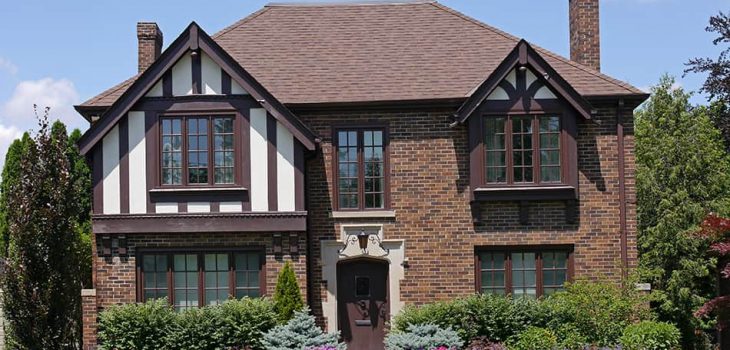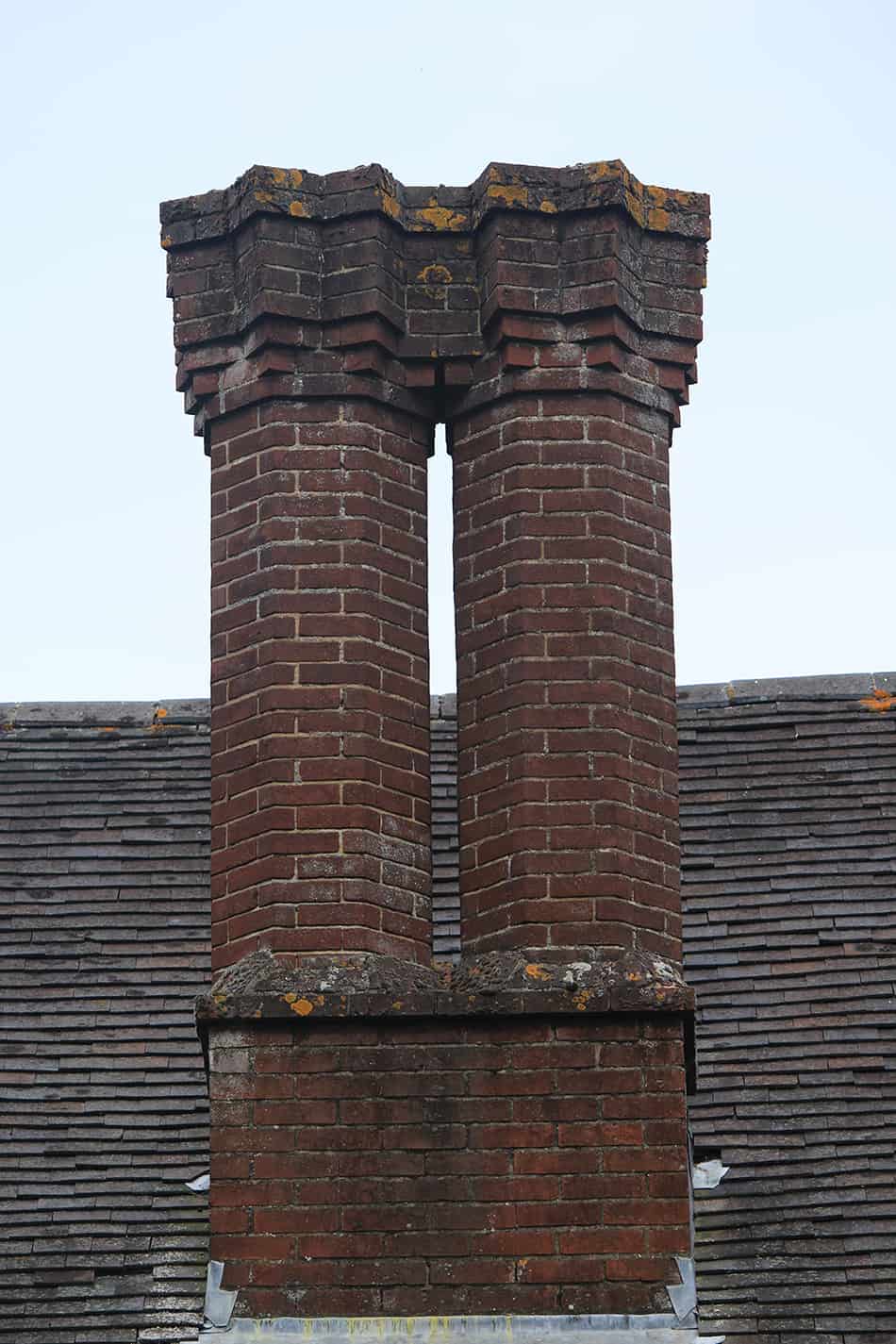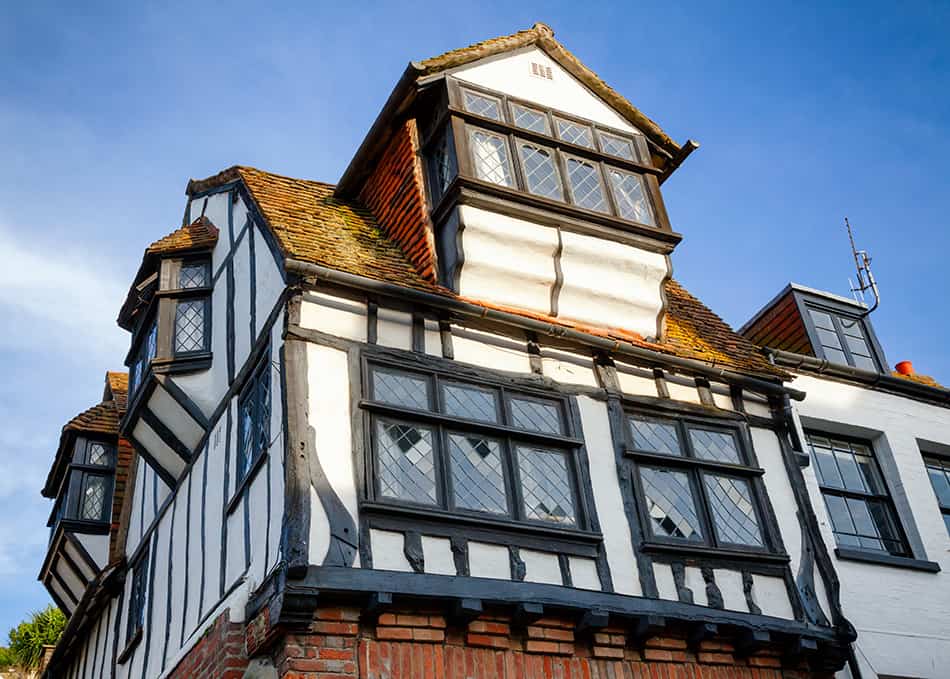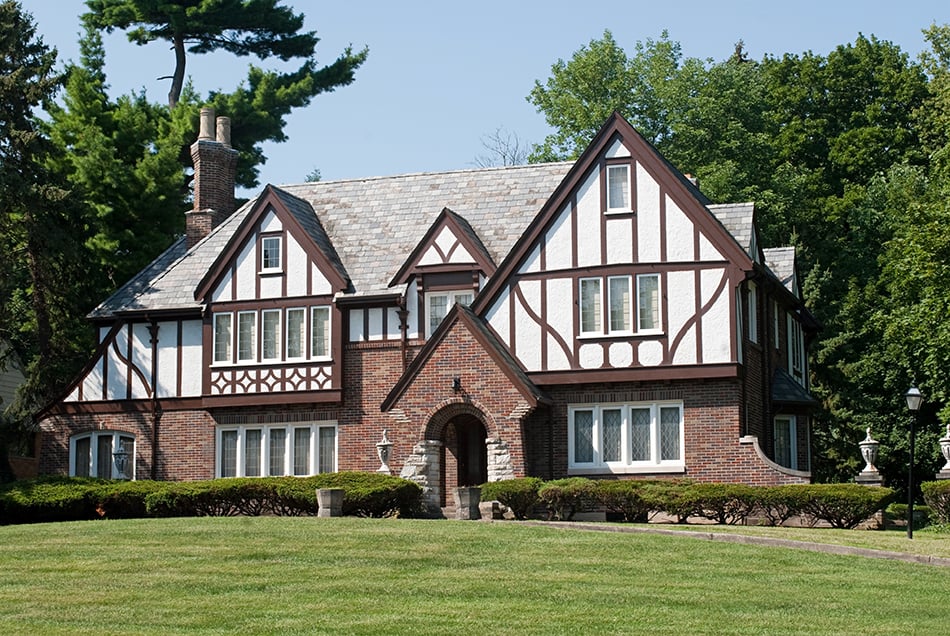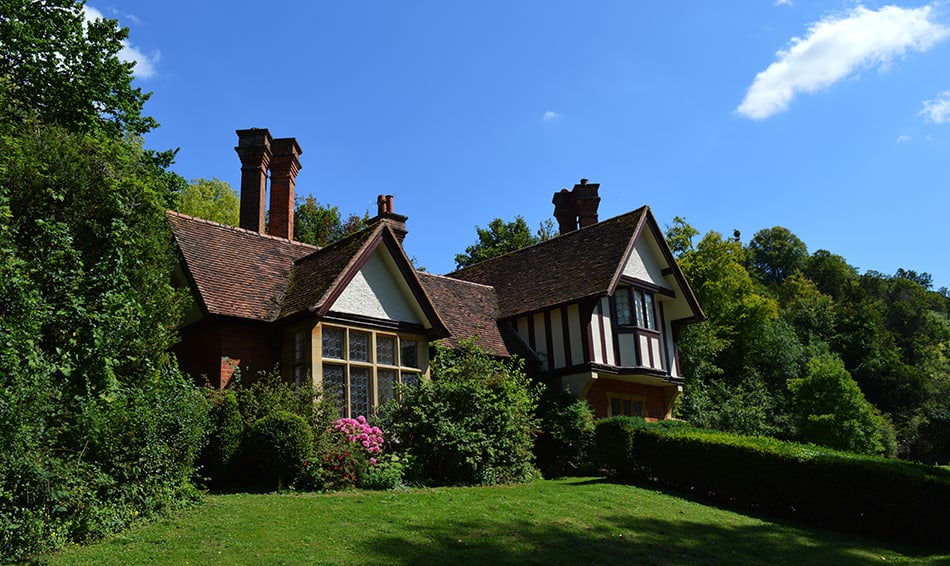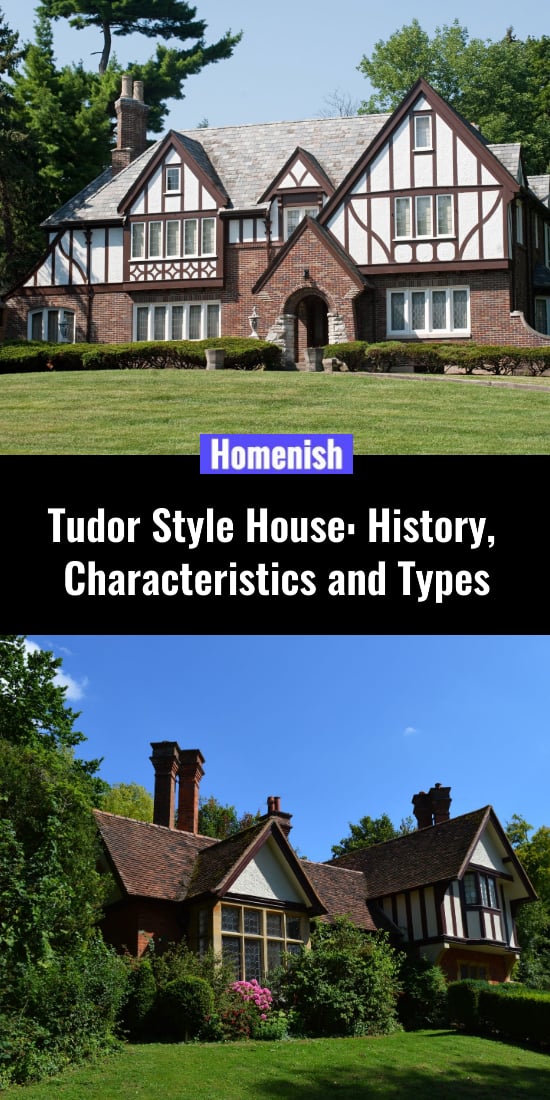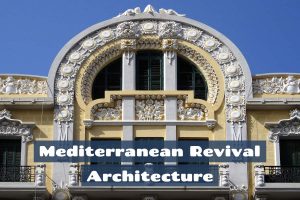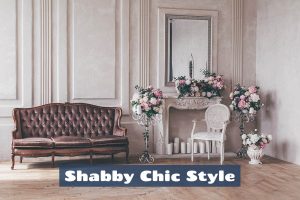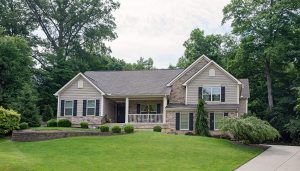When you hear someone talking about the Tudors, the controversial King Henry VIII may pop to mind and the way he treated his six wives. However, during the time he was in power, a very unique architecture was born. The quaint fairytale-like Tudor homes made their appearance among their colonial counterparts with their easily recognizable features. These charming homes come in all sizes and often mimic the romantic appearance of an old English manor.
Curious to know more about Tudor Style houses? Read on to learn all about these fascinating architectural homes.
History of Tudor Style House
Tudor homes date back to Medieval England, with the style becoming popular during the 15th century. As the Medieval era progressed, three centuries later, Tudor style homes found their way to America. They were mostly built in the US between 1890 and 1940 before the Colonial Revival homes took over as the new standard.
Tudor houses were mainly seen in Washington, DC, which made up a large proportion of the stately homes along with Colonial Revival. These houses were built by European-trained architects for wealthy property buyers, but by the 1930s, many middle-class communities in Long Island and Massachusetts also embraced this classic style.
By the time World War II ended in 1945, Tudor style had lost its appeal and gave its seat to the Colonial homes since it was expensive to build and maintain.
So how do you identify a Tudor house? Here are the defining characteristics of a Tudor style house:
- Steeply pitched and gabled roofs
- Dark brown or black half-timbering
- 2 or more stories
- Large fireplaces
- Elaborate, large chimneys
- Decorative detailing
- Embellished entrances
- Multi-paned or casement windows
Main Features of Tudor Style House in Detail
Overall Design
The American Tudor homes emulate the 16th century old English Tudor, but in a modernized way. This is a style that focuses on detailed craftsmanship with character oozing out of its every corner. Before I go into further detail about the individual characteristics of Tudor homes, let’s start by their overall design. These houses tend to be at least 2 stories tall with large-sized rooms that make up their character. The structures feature asymmetrical designs in both the interior and the exterior layout.
Tudor House Size
From the smaller cottage-style Tudors to the larger and luxurious house plans, Tudor homes come in a variety of sizes to suit small and large families. These homes range from around 1,500 square feet to 7,500 square feet with the majority averaging 2,500 square feet.
Roof
One of the most distinguishing features of a Tudor house is the steep gabled roof that’s typically adorned with small dormers. Gabled roofs are highly suitable for the Midwest because of their ability to withstand excessive snow and rain. The primary gable usually has a cross or secondary side gable and the ends are adorned with large, decorated boards.
Windows
Wooden or metal-framed casement windows in groups of three or more are the typical features of Tudor-style houses. These leaded-glass windows are usually divided into eight diamond-shaped rectangular panes. The windows of a Tudor house are placed symmetrically in the gable.
Chimney
A Tudor house without a huge chimney wouldn’t look complete as this was a distinguishing feature of Tudor architecture. Tudor chimneys are mostly made of stucco or brick with decorative clay pots. Another notable element of these chimneys is their metal or stone extension at the top.
Decorative Half-Timbering
Dark brown or black half-timbering is another distinct feature of Tudor architecture. Half-timbering was seen as necessary when building multiple stories. The architects didn’t have the tools to use stone so they built timber frames and filled them with stucco instead. The exposed wooden posts are the prominent features that complete a traditional Tudor exterior.
A Combination of Different Materials
In Tudor style houses, several building materials are used for different parts of the property, including bricks, wood, stucco, and stone. The first floor, for example, is normally built using bricks and stone, while the upper floors consist of wood and stucco. The American Tudor houses are mostly built with half-timbering and stone as their main decorative features.
Detailed Entrance
The entrance of a Tudor home often features various decorative and safety elements that are arranged asymmetrically. To recess the door, thick masonry is used above it in order to prevent weather damage. Most Tudor homes typically have arched front doors as one of their most common features.
The Prominent Tudor Arch
The Tudor arch is one of the most prominent architectural features of the Tudor house. This arch usually appears right at the top of the property and is bordered by a stone feature. So what exactly defines this type of arch? The pointed apex is one distinctive point. The other feature is the connection between the span and rise. The Tudor arch has a smaller rise than span, which makes it wider, not taller.
Interior Floor Plans of Tudor Homes
The interiors of Tudor houses are usually spacious and well laid out with warm and comfortable furnishings that match the layout. The thick walls of these houses serve as excellent noise insulation. The red brick walls perfectly mimic the exterior as well as the oak floors and luxurious curtains that emit character. The exposed wood isn’t just for the exteriors. Inside a Tudor home, exposed beams in the ceilings and even the walls of the upper floors emit a warm and inviting feel. The look of stone and brick with matching fireplaces and oak flooring make this style home a highly desirable place to live in.
Furniture
The furniture in a Tudor home plays a huge role in attracting attention. From Tudor-style four poster beds and wooden dressers to heavy tables and plenty of ornate carvings, dark wood is the material that is seen in all these items as well as the floors. The only bright colors you will see in older Tudor homes are in the upholstery, the rugs, and the drapes.
Advantages of Tudor Style Houses
- Tudor homes are unique in style and even though they are expensive to buy, they offer a piece of history that’s priceless. Since there aren’t many of these beauties left, owning one is a true privilege
- Living in a Tudor home feels cozy, especially if you light up the interiors with chandelier or metal lanterns
- Tudor houses boast large rooms that can accommodate growing families and even their servants
- Tudor homes are so unique with their detailed craftsmanship and ornate features that they can’t be replicated in modern construction methods
- Tudor homes are ideal for colder climates as they feature thicker walls and large fireplaces
Drawbacks of Tudor Style Houses
- The building materials used in the original Tudor homes aren’t readily available these days. Even if the materials are found, they won’t come cheap
- Tudor homes are ideal for colder climates as they feature thicker walls and large fireplaces
- The original Tudor houses have thatched roofs, which requires special care. These roofs must be renewed every 25 years and only an expert can carry out such a task in order to prevent bird and rodent infestations
- The rooms are dark, especially the kitchen as it’s typically located deep in the heart of the house
- Timber frames and straw thatching increase the risk of fire
- Old homes are the breeding ground for mold and pollen due to aged timber flooring and beamed ceilings
- The wood used inside the house requires regular care to prevent insect infestation and rot
- The new versions of Tudor homes aren’t standard so if you own one of these properties, you may come across structural issues that can’t be rectified as easily as the ones in modern homes
- Retaining the original elements of a Tudor home takes a lot of hard work
3 Types of Tudor Style Houses
1. Original English Tudor
The original English Tudor started in England during the 15th century when the British monarchs were reigning in the country. The original English Tudor house was built for the wealthy but it wasn’t until a few decades later that the commoners adopted a more modest version of Tudor architecture. The same building technique, i.e. the half-timbers, were visible from inside and outside of the house with the familiar dark brown and white exteriors. The construction process of Tudor homes was time consuming and labor intensive, and by the 16th century, this style started losing its appeal in England.
Characteristics of English Tudor:
- Steeply pitched roof covered in either straw thatch, slate, clay, or tiles
- Tall, multi-paned windows
- Towering spires and slender columns
- Huge stone chimneys with ornate stacks that stretched above the roof
- Exposed external beams that were usually made from oak. These were dark color with whitewashed walls in between. Some English Tudor homes featured ground to ceiling beams, while others only had wooden beam construction on the upper level with bricks or other materials for the lower levels
- Exposed wooden beams in almost every room of the house
- Exteriors were built from stone or brick
- The house floors were made of stone but later changed to wood
- The rooms in English Tudor homes were often square or rectangular shaped. Some even had H shape. The ceiling was much lower than the modern houses in England.
2. American Tudor Revival
The original Tudor style house didn’t make it to America until three centuries later during the early 1900s. Rather than relying on heavy timbers to build a Tudor home, the American version consisted of the same wood-framing techniques as other homes of that era. The popularity of these homes took off in the US as Americans embraced the style and started building new houses that featured a combination of the old-world design and modern elements.
The American Tudor Revival is a direct replica of the stick style house, with authentic half-timbering construction and stone or brick walls on the first floor. The upper floors were stud-framed and covered with layers of decorative stucco and faux timbers.
The most famous Tudor Revival style building is the Astor House in New York, which was built by a businessman of the same name in 1914. It features ornate chimneys, a high-pitch roof and brick exterior. The building has been articulately restored over the decades whilst remaining true to detail. Another well-known Tudor Revival style house that was the first of its kind to be constructed in the US is the Adams Building in Quincy, MA. The building has the iconic steep roofline and decorative half-timbering, which are the hallmarks of Tudor design.
Characteristics of American Tudor Revival:
- 2 or 3 stories high
- To mimic the half-timbering effect, this Tudor style featured board strips that were combined with stucco or stone on the exterior part of the house
- Cross gables were often included in the floor plans
- Multiple tall, gabled windows with diamond or square shaped panes
- Gabled steep roofs
- Windows had leaded glass
- The thatched roofs were replaced by slate as the material was easier to repair and replace
- Decorative beamed ceilings
- Arched entrance
- Interior walls were plastered
- Detailed wooden staircases
- Rectangular shaped design
- The second floor extended over a large veranda or porch
- Large brick chimneys
- The front door often featured heavy iron knockers to give a medieval look
3. Small Tudor Cottages
Since a full-size Tudor house was too expensive to build, the Americans in the Northeast and Midwest turned to building or restoring the smaller Tudor cottages. You’ll find many of these historic grand houses in the US alongside the Stick-style and Victorian houses, with many of them having undergone total refurbishments and no longer featuring the recognizable half-timbering.
Characteristics of small Tudor cottages:
- One and a half stories high
- Rectangular or square floor plan
- Steep roofs that extend almost to the ground level
- Tall, ornamental chimney
- Stone or brick siding with half-timbered exterior above the first floor
- Multiple-paned, tall windows
- Brick or stone entryways
- Exposed wooden beams in all the rooms with wood detailing
